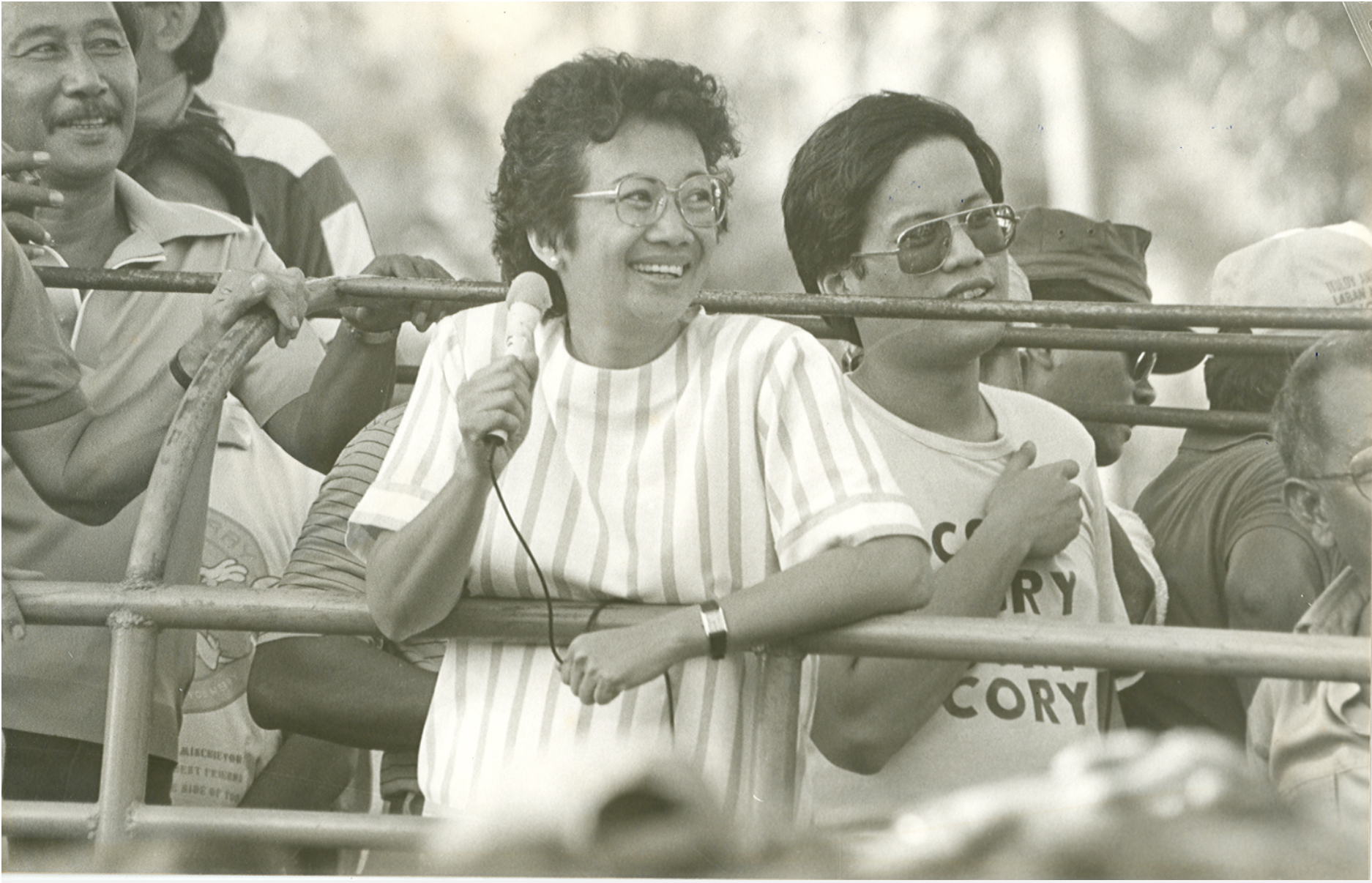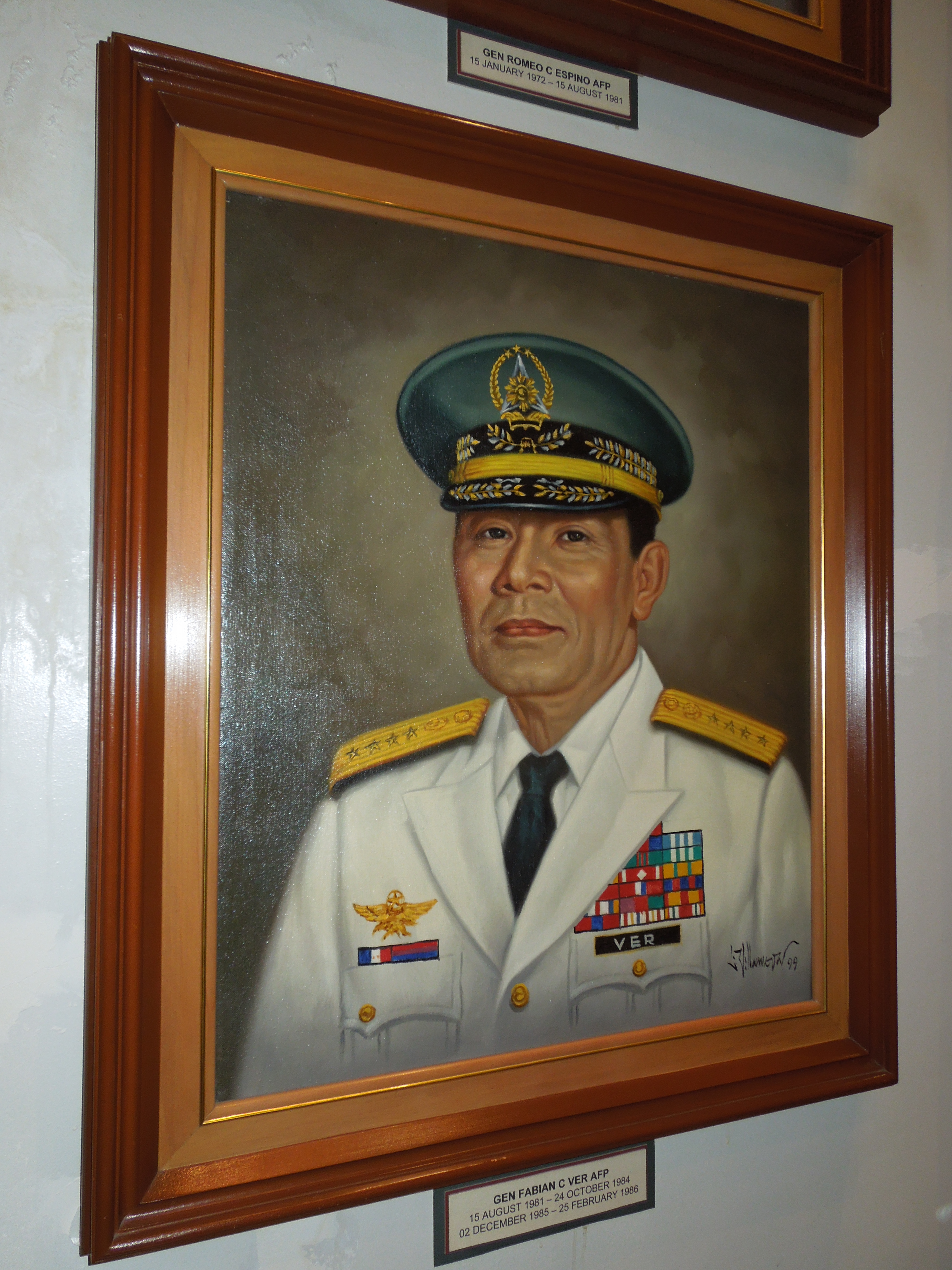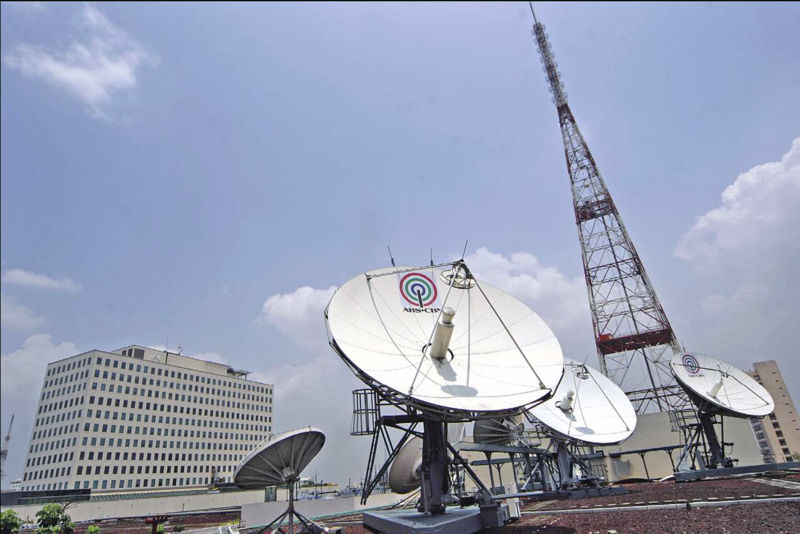|
PTV-4
DWGT-TV, Channel 4 (analog) and channel 14 (digital), is a non-commercial flagship station of Philippine-government owned television network People's Television Network. Its head office, studios and analog-digital transmitter are located at Broadcast Complex, Visayas Avenue, Brgy. Vasra, Diliman, Quezon City. PTV operates every Mondays to Fridays from 6:00 am to 12:00 mn and Saturdays and Sundays from 7:00 am to 12:00 mn. History In 1961, the Philippine government, through the Philippine Broadcasting Service established a government TV station called DZFM-TV Channel 10 which it time-shared with two other organizations. It was financed by government subsidy but had a short life because of channel frequency allocation. The frequency rights of Channel 4 were previously owned by one of the ABS-CBN stations in Metro Manila (DZXL-TV 4) when the station moved from channel 9 to channel 4 on November 14, 1969. During the Martial Law era, the government seized the frequency of channel ... [...More Info...] [...Related Items...] OR: [Wikipedia] [Google] [Baidu] |
People's Television Network
People's Television Network ( fil, Telebisyon ng Bayan; abbreviated PTV) is the flagship state broadcaster owned by the Government of the Philippines. Founded in 1974, PTV is the main brand of People's Television Network, Inc. (PTNI), one of the attached agencies under the Office of the Press Secretary (OPS). PTV, along with government-owned media companies Intercontinental Broadcasting Corporation and the Philippine Broadcasting Service-Bureau of Broadcast Services, forms the media arm of the OPS and acts as a primary state television broadcaster that focuses on news, information and public service programming. Its head office, studios and transmitter are located at Broadcast Complex, Visayas Avenue, Barangay Vasra, Diliman, Quezon City. As a government-run station, PTV receives funding from the General Appropriations Act (Annual National Budget) and sales from blocktimers and advertisers, among others. PTV also runs a Muslim-oriented digital television channel Salaam TV ... [...More Info...] [...Related Items...] OR: [Wikipedia] [Google] [Baidu] |
Quezon City
Quezon City (, ; fil, Lungsod Quezon ), also known as the City of Quezon and Q.C. (read in Filipino as Kyusi), is the List of cities in the Philippines, most populous city in the Philippines. According to the 2020 census, it has a population of 2,960,048 people. It was founded on October 12, 1939, and was named after Manuel L. Quezon, the List of presidents of the Philippines, second president of the Philippines. The city was intended to be the Capital of the Philippines, national capital of the Philippines that would replace Manila, as the latter was suffering from overcrowding, lack of housing, poor sanitation, and traffic congestion. To create Quezon City, several barrios were carved out from the towns of Caloocan, Marikina, San Juan, Metro Manila, San Juan and Pasig, in addition to the eight vast estates the Philippine government purchased for this purpose. It was officially proclaimed as the national capital on October 12, 1949, and several government departments and i ... [...More Info...] [...Related Items...] OR: [Wikipedia] [Google] [Baidu] |
Government Of The Philippines
The Government of the Philippines ( fil, Pamahalaan ng Pilipinas) has three interdependent branches: the legislative, executive, and judicial branches. The Philippines is governed as a unitary state under a presidential representative and democratic constitutional republic in which the president functions as both the head of state and the head of government of the country within a pluriform multi-party system. The powers of the three branches are vested by the Constitution of the Philippines in the following: Legislative power is vested in the two-chamber Congress of the Philippines—the Senate is the upper chamber and the House of Representatives is the lower chamber. Executive power is exercised by the government under the leadership of the president. Judicial power is vested in the courts with the Supreme Court of the Philippines as the highest judicial body. Legislative branch The legislative power is vested in the Congress of the Philippines which consists of t ... [...More Info...] [...Related Items...] OR: [Wikipedia] [Google] [Baidu] |
Benigno Aquino III
Benigno Simeon Cojuangco Aquino III (; February 8, 1960 – June 24, 2021), also known as Noynoy Aquino and colloquially as PNoy, was a Filipino politician who served as the 15th president of the Philippines from 2010 to 2016. The son of assassinated politician Benigno Aquino Jr. and 11th president Corazon Aquino, he was a fourth-generation politician as part of the Aquino family of Tarlac. Benigno Aquino III previously served as a member of the House of Representatives and Senate from 1998 to 2010, and also as a deputy speaker of the House of Representatives from 2004 to 2006. On September 9, 2009, shortly after the death of his mother, he announced his candidacy in the 2010 presidential election, which he eventually won. He was sworn into office as the 15th president of the Philippines on June 30, 2010, succeeding Gloria Macapagal Arroyo. [...More Info...] [...Related Items...] OR: [Wikipedia] [Google] [Baidu] |
President Of The Philippines
The president of the Philippines ( fil, Pangulo ng Pilipinas, sometimes referred to as ''Presidente ng Pilipinas'') is the head of state, head of government and chief executive of the Philippines. The president leads the executive branch of the Philippine government and is the commander-in-chief of the Armed Forces of the Philippines. The president is directly elected by the people, and is one of only two nationally elected executive officials, the other being the vice president of the Philippines. However, four vice presidents have assumed the presidency without having been elected to the office, by virtue of a president's intra-term death or resignation. Filipinos generally refer to their president as ''pangulo'' or ''presidente'' in their local language. The president is limited to a single six-year term. No one who has served more than four years of a presidential term is allowed to run or serve again. The current president of the Philippines is Bongbong Marcos, w ... [...More Info...] [...Related Items...] OR: [Wikipedia] [Google] [Baidu] |
Corazon Aquino
Maria Corazon "Cory" Sumulong Cojuangco-Aquino (; ; January 25, 1933 – August 1, 2009) was a Filipina politician who served as the 11th president of the Philippines from 1986 to 1992. She was the most prominent figure of the 1986 People Power Revolution, which ended the two-decade rule of President Ferdinand Marcos and led to the establishment of the current democratic Fifth Philippine Republic. Corazon Aquino was married to Senator Benigno Aquino Jr., who was one of the most prominent critics of President Marcos. After the assassination of her husband on August 21, 1983, she emerged as leader of the opposition against the president. In late 1985, Marcos called for a snap election, and Aquino ran for president with former Senator Salvador Laurel as her running mate for vice president. After the election held on February 7, 1986, the Batasang Pambansa proclaimed Marcos and his running mate Arturo Tolentino as the winners, which prompted allegations of electoral fra ... [...More Info...] [...Related Items...] OR: [Wikipedia] [Google] [Baidu] |
Fabian Ver
Fabian Crisologo Ver (born Fabian Maria Trinidad Juan Cirilo Crisologo y Ver; 20 January 1920 – 21 November 1998) was a Filipino military officer who served as the Commanding Officer of the Armed Forces of the Philippines under President Ferdinand Marcos. Early life and education Fabian Ver was born on January 20, 1920, to Juan Ver and Elena Crisologo. He grew up in the town of Sarrat in Ilocos Norte. Ver attended the University of the Philippines and was an alumnus of its reserve program. He also joined the UP Vanguard in 1941. However, the outbreak of World War II disrupted his studies. After the war, he resumed his studies at the University of Manila where he obtained a Bachelor of Law degree and later the University of Louisville where he graduated with a degree in police administration in 1963. He also undertook training in Hawaii and with the Los Angeles Police Department. Military and political career During World War II, he acted as a guerrilla intelligence officer ... [...More Info...] [...Related Items...] OR: [Wikipedia] [Google] [Baidu] |
Voltes V
, popularly known as simply ''Voltes V '' (pronounced as "Voltes Five") is a Japanese anime television series produced by Toei Dōga and animated by Nippon Sunrise (formerly known as Soeisha). It is the second installment of the ''Robot Romance Trilogy'', which also includes '' Chōdenji Robo Combattler V'' and '' Tōshō Daimos''. It is directed by Tadao Nagahama and produced by Yoshiyuki Tomino. It aired on TV Asahi from June 1977 to March 1978. ''Voltes V'' grew into a cultural phenomenon in the Philippines since its airing in the country in 1978, and had achieved popularity as well in Indonesia and Cuba. A live-action television series adaptation, titled '' Voltes V: Legacy'', is currently in production in the Philippines for broadcast on GMA Network. Plot One day, a massive horde of flying saucers appears out of the depths of space and launches an invasion of the planet Earth. Despite the best efforts of the world's militaries and the Earth Defense Force under the Jap ... [...More Info...] [...Related Items...] OR: [Wikipedia] [Google] [Baidu] |
Ferdinand E
Ferdinand is a Germanic name composed of the elements "protection", "peace" (PIE "to love, to make peace") or alternatively "journey, travel", Proto-Germanic , abstract noun from root "to fare, travel" (PIE , "to lead, pass over"), and "courage" or "ready, prepared" related to Old High German "to risk, venture." The name was adopted in Romance languages from its use in the Visigothic Kingdom. It is reconstructed as either Gothic or . It became popular in German-speaking Europe only from the 16th century, with Habsburg rule over Spain. Variants of the name include , , , and in Spanish, in Catalan, and and in Portuguese. The French forms are , '' Fernand'', and , and it is '' Ferdinando'' and in Italian. In Hungarian both and are used equally. The Dutch forms are and ''Ferry''. There are numerous short forms in many languages, such as the Finnish . There is a feminine Spanish, Portuguese and Italian form, . Royalty Aragón/León/Castile/Spain * Ferdin ... [...More Info...] [...Related Items...] OR: [Wikipedia] [Google] [Baidu] |
ABS-CBN Broadcasting Center
The ABS-CBN Broadcasting Center (also called ABS-CBN Broadcast Center; formerly known as Broadcast Plaza from 1974 to 1979 and current edifice formerly spelled officially as ABS-CBN Broadcasting Centre) in Diliman, Quezon City, Philippines is the oldest broadcast headquarters of ABS-CBN. It houses ABS-CBN Entertainment studios, broadcast facilities, offices and the headquarters of ABS-CBN News. It is also where the transmitter site of ALLTV is situated which was previously used by ABS-CBN before it became inactive due to the 2020 broadcast franchise renewal dispute with ownership of the transmitter remains with the network. It occupies an area of approximately 34,000 square meters adjacent to ELJ Communications Center. It was originally built in 1968 and was then the most advanced broadcast facility in Asia. Today it is now the country's largest and most technologically advanced media facility. While ABS-CBN's production facility is located at ABS-CBN Horizon IT Park at San J ... [...More Info...] [...Related Items...] OR: [Wikipedia] [Google] [Baidu] |




